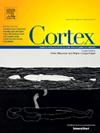感觉丧失后触觉手空间表征的稳定性
IF 3.2
2区 心理学
Q1 BEHAVIORAL SCIENCES
引用次数: 0
摘要
几项研究表明,健康个体在不同身体部位的触觉感知存在显著扭曲。这些扭曲是灵活的和感性的,正如研究所揭示的那样,暂时改变了身体的视觉体验,导致感知到的触觉距离的变化。此外,有证据表明,皮层区域通过将扭曲的身体表征重新调整为以物体为中心的框架并保持触觉大小的恒定,有助于减轻这些扭曲。这种重新缩放意味着大脑拥有受刺激身体部位的物理大小的表征。然而,长期的视觉剥夺是否会影响触觉大小恒定和身体扭曲仍不清楚。为了回答这个问题,我们要求盲人和视力正常的人估计他们手背和手指上的触摸点之间的触觉距离。结果表明,无论视觉经验如何,两组参与者都表现出典型的手扭曲,这表明即使出生以来缺乏视觉信息也不会影响触觉刺激的空间表征。在更理论化的层面上,这些数据揭示了触觉尺寸恒常性是系统的一个稳定原则,即使在没有视觉输入的情况下也会发展。本文章由计算机程序翻译,如有差异,请以英文原文为准。
Stability of tactile hand space representation following sensory loss
Several studies have shown the presence of significant distortions in tactile perception across different body parts in healthy individuals. These distortions are flexible and perceptual, as revealed by studies that have temporarily altered the visual experience of the body leading to changes in perceived tactile distances. Further, evidence suggests that cortical areas help to mitigate these distortions by rescaling the distorted body representations into an object-centred frame and preserving tactile size constancy. This rescaling implies that the brain possesses a representation of the physical size of the stimulated body part. However, it remains unclear whether long-term visual deprivation could affect tactile size constancy and body distortions. To answer this question, we asked blind and sighted individuals to estimate tactile distances between pairs of touched points delivered on the dorsum of their hands and fingers. The results showed that, regardless of visual experience, both groups of participants showed typical hand distortions, suggesting that even a lack of visual information since birth does not influence the spatial representation of tactile stimulation. On a more theoretical level, these data reveal that tactile size constancy is a stable principle of the system and develops even in the absence of visual input.
求助全文
通过发布文献求助,成功后即可免费获取论文全文。
去求助
来源期刊

Cortex
医学-行为科学
CiteScore
7.00
自引率
5.60%
发文量
250
审稿时长
74 days
期刊介绍:
CORTEX is an international journal devoted to the study of cognition and of the relationship between the nervous system and mental processes, particularly as these are reflected in the behaviour of patients with acquired brain lesions, normal volunteers, children with typical and atypical development, and in the activation of brain regions and systems as recorded by functional neuroimaging techniques. It was founded in 1964 by Ennio De Renzi.
 求助内容:
求助内容: 应助结果提醒方式:
应助结果提醒方式:


